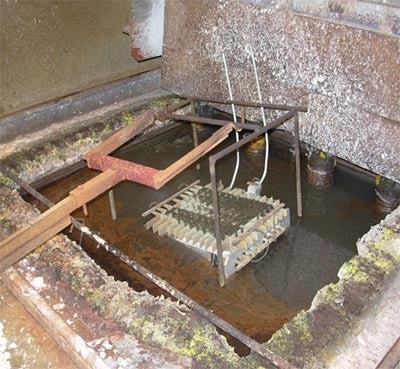What is Brazing?
Brazing is the process of melting a metal between two other pieces of metal in order to join them. Common metals for this process in the thermal management world include copper and copper based alloys, aluminum-silicon based alloys, and nickel alloys. This process allows us to create brazed fin heat sinks and expands our thermal management technology toolbox.
Brazing is not to be confused with braising, which is a cooking process where your first sear the meat at a high temperature then cook it low and slow with some amount of liquid in a closed container like a pot. Brazing metals is more like high temperature baking anyways.
Brazing, if applied well, can generate tight joints since the process relies on capillary action wicking the braze material between the parts. Braze material is an alloy that melts at a temperature lower than the parts you're joining together. Stronger and more consistent joints are made with materials that closely match the mating parts. In all brazing processes, mating parts are fixtured together to ensure they retain their geometric relationship to each other during the brazing process. Once parts cool, they're either ready to go or need some finishing like residual flux removal or final straightening or machining.
What’s the difference between brazing and soldering?
For those of you wondering, brazing sounds awfully like soldering. Brazing essentially is soldering, just at a much higher temperature (above 450°C, or 840°F). The higher temperature opens the door to a bigger material selection, which includes one of our favorites, aluminum. Both processes use a filler material, like a solder, to join the metal pieces together. If the metals and atmosphere require it, flux is also added to the mix to prevent oxidation of the joint.
Brazed Fin Heat Sinks: Bonded Fin’s Older, Stronger Sibling
Brazed Fin Heat Sinks geometrically are nearly the same as bonded fin heat sinks. Like bonded fins, brazed fin heat sinks consist of a base, fins, and braze material to join the parts together. Bases typically have tight grooves for the braze material to wick into. Brazed fin heat sinks have the added bonus of a stronger joint with less interface resistance between the base and fins.
Pick your Process: The Different Types of Brazing
Controlled Atmosphere Brazing
Vacuum Brazing
Dip Brazing with a Salt Bath Flux
Dip Brazing with a Salt Bath Flux
All in All
Brazing gives us a whole bunch of options when it comes to constructing high quality or high complexity thermal management products. Genie offers both copper and aluminum brazed fin heat sinks in the technology selection page.
Are you looking help designing or manufacturing a Brazed Assembly? We can help with either your brazed heat sinks, heat exchangers, or liquid cold plates. Contact Us today for assistance!








